Every Beach Boys Album, Ranked
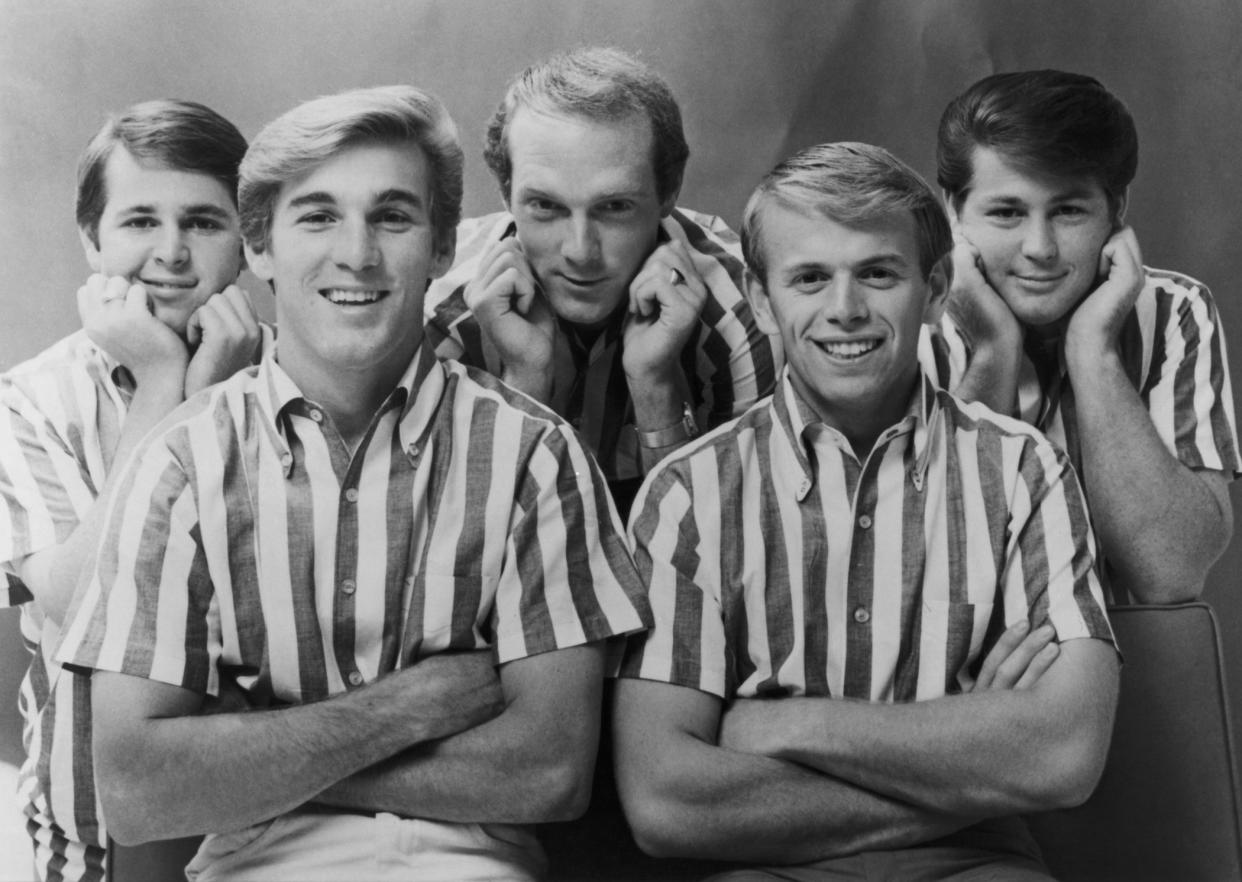
The Beach Boys’ story is one of contradictions: genius and triviality, harmony and disharmony, creativity and commodity, Dennis Wilson and Al Jardine, Brian Wilson and Mike Love. Endorsed by Ronald Reagan, they also had dealings with Charles Manson. They made “Don’t Talk (Put Your Head On My Shoulder)” and also made “Hey Little Tomboy.” They’re still a band, but not really. Their best album isn’t technically an album.
More from Spin:
Bradley Cooper, Eddie Vedder Cover Jason Isbell’s ‘A Star Is Born’ Song
Madi Diaz on Journaling and Songwriting For Her Mental Health
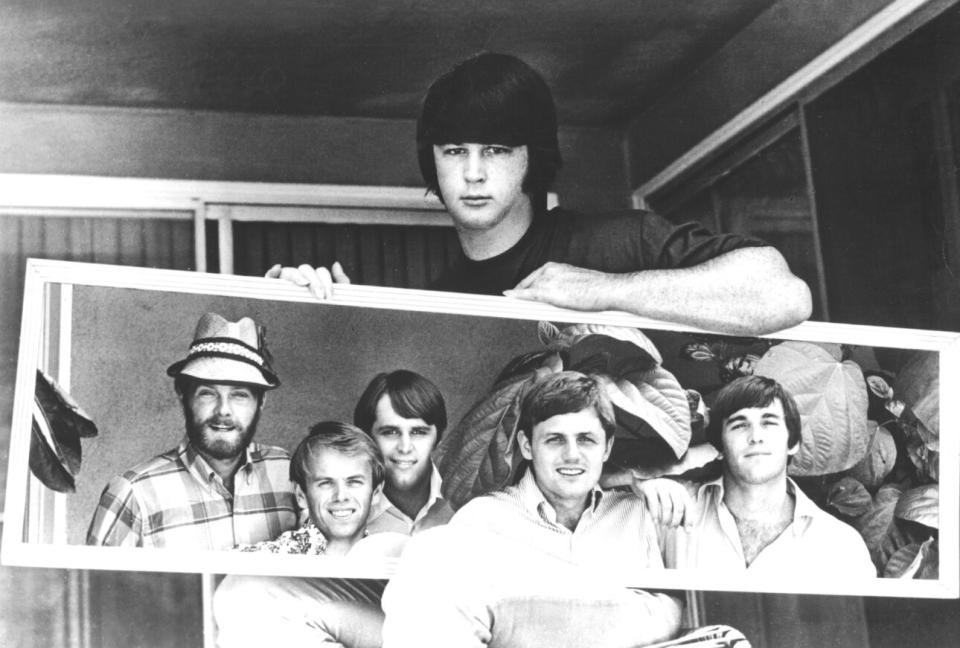
Everything is amplified: the highs, the lows, the musical sophistication, the warring factions. The Beach Boys’ pioneering influence over pop and rock can still be heard today, having devised new ways of utilizing the studio as an instrument and developing their own sonic vocabulary, but they also fell foul of mental illness, substance abuse, and infamous squabbles over creative direction. Their history is epic in scale, like a Steinbeck saga played out over decades that explores themes of brotherhood, greed, God, and California. You might not believe it if it weren’t true.
As summer approaches and a new Disney+ documentary is released, we thought it high time we ranked all 30 Beach Boys albums, counting down to No. 1 (excluding live and compilation albums) and charting a course through their strange, inconsistent, and wonderful body of work.
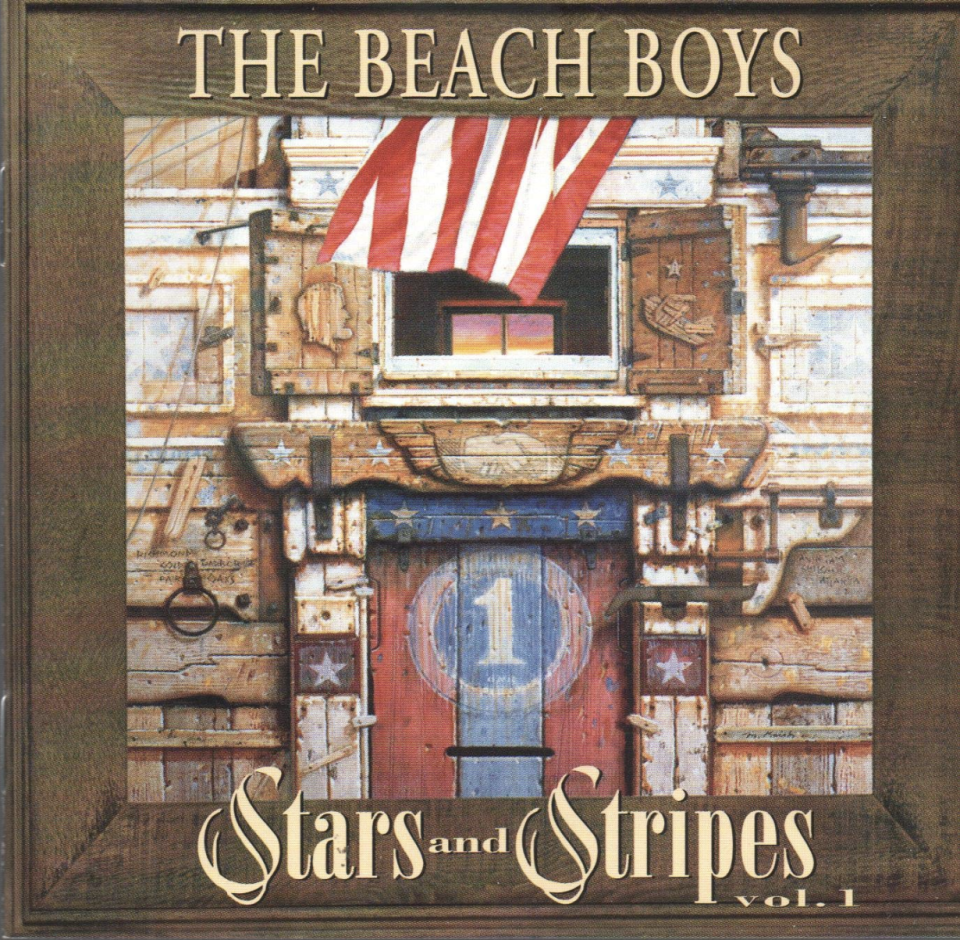
30. Stars and Stripes Vol. 1 (1996)
Stars and Stripes Vol. 1 trades in the magnificence of the past like a snapshot of some pristine, awe-inspiring sculpture sold as a keyring in a gift shop. Comprising country covers of tracks including “Caroline, No” and “Don’t Worry Baby,” this era of the Beach Boys recalls that bit in Ratatouille where the image of legendary chef Auguste Gusteau is used to sell fast food of various cuisines — “We’re inventing new ways to sell out over here!” This album’s only value is to remind you how good the band once were.
29. Summer in Paradise (1992)
That wretched album artwork tells you all you need to know about Summer In Paradise: overproduced, tawdry, Trumpian in its gaudiness. Here, John Stamos reimagines Dennis Wilson’s lilting masterpiece “Forever” as an Aerosmith B-side. “Summer of Love”—rumored to have been pitched to, then wisely declined by, The Simpsons‘ producers as a collaboration with Bart—plumbs new depths of hip-hop hideousness. And the Beach Boys cover “Surfin’’ in the style of an AI-generated Mike + The Mechanics for reasons known only to them. Sad!
28. Still Cruisin’ (1989)
Slightly reminiscent of the transition from lush vegetation to wasteland in global warming documentaries, Still Cruisin’ is when things started to get, like, really bad. Though rescued from total failure by “Kokomo”—which is just a neat song, okay?!—and Brian’s “In My Car,” which might have been good if not punctured by horrible production and distorted guitars, this record is still tedious. We end with the original studio recordings of “I Get Around” and “California Girls.” Why? Because.
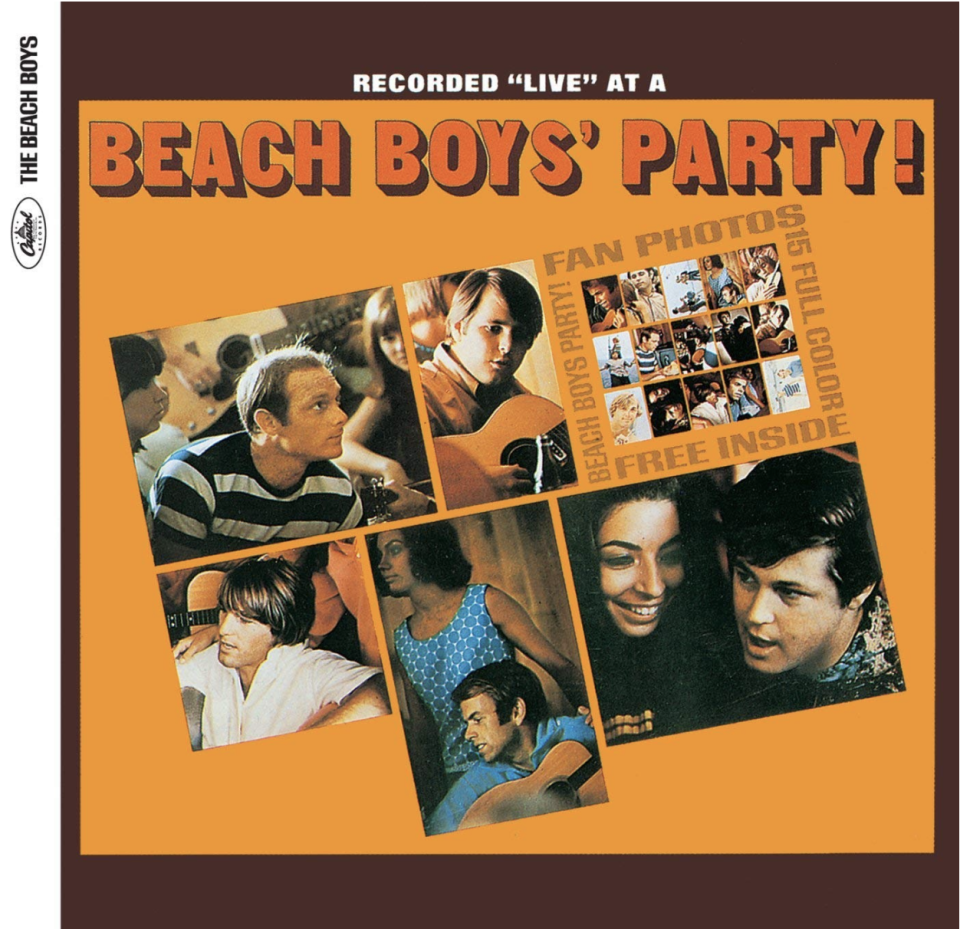
27. Beach Boys’ Party! (1965)
Comprising mostly cover versions performed in a stripped-back, proto-Smiley Smile style, Beach Boys Party! is a fairly nothing-y piece of product, aside from that iconic cover of the Regents’ “Barbara Ann.” Charitably, you might say it anticipates NPR’s Tiny Desk Concert series.
26. The Beach Boys (1985)
The first album recorded after Dennis Wilson drowned, The Beach Boys follows Keepin’ the Summer Alive’s formula of tunes with no idiosyncrasy or fun, their edges sanded to a smooth, charmless surface.
25. Keepin’ the Summer Alive (1980)
Even this album’s title seems to suggest that the Beach Boys’ career—at least as a viable rock group—needed resuscitation. While albums like M.I.U. and L.A. (Light Album) have the odd moment of brilliance, Keepin’ the Summer Alive has nothing of the sort.
24. 15 Big Ones (1976)
One of the wearier installments in the Beach Boys’ catalog, 15 Big Ones comprises seven originals and eight rock ‘n’ roll standards. The enjoyably squelchy rock thump of “It’s OK” and the charming attempt at gospel in “That Same Song” is not enough to rescue this album from sheer mediocrity.
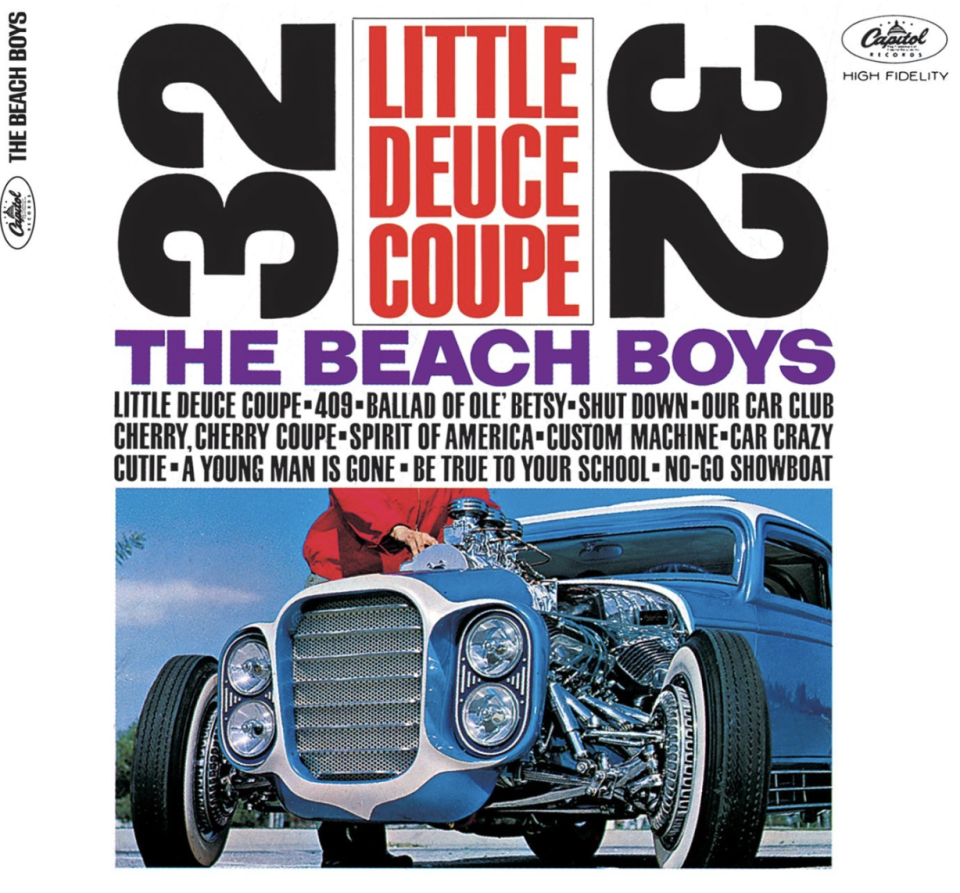
23. Little Deuce Coupe (1963)
While Little Deuce Coupe is one of the weaker pre-Pet Sounds albums, the title track is still a compact marvel and there’s a nice mixture of scrappy car songs and tender ballads. That the same band would release “Good Vibrations” just three years later is startling.
22. Surfin’ Safari (1962)
The spot where it all began. The Beach Boys’ debut album, Surfin’ Safari, shows a band still in thrall to the surf boom but with enough melodic chops to set them apart from their peers. Still, there’s plenty of energy here, and Brian secured the right to produce the album (a rarity in those days, especially for a callow 20-year-old), though Nick Venet was officially credited as producer.
21. That’s Why God Made the Radio (2012)
Who could have predicted that the Beach Boys would deliver a passable reunion album? The title track has the kind of wistfulness not heard from the group since at least 1979, while the last two tracks, “Pacific Coast Highway” and “Summer’s Gone,” are a poignant way to conclude what is likely the band’s final studio LP. That’s the Beach Boys for you: confounding until the end.
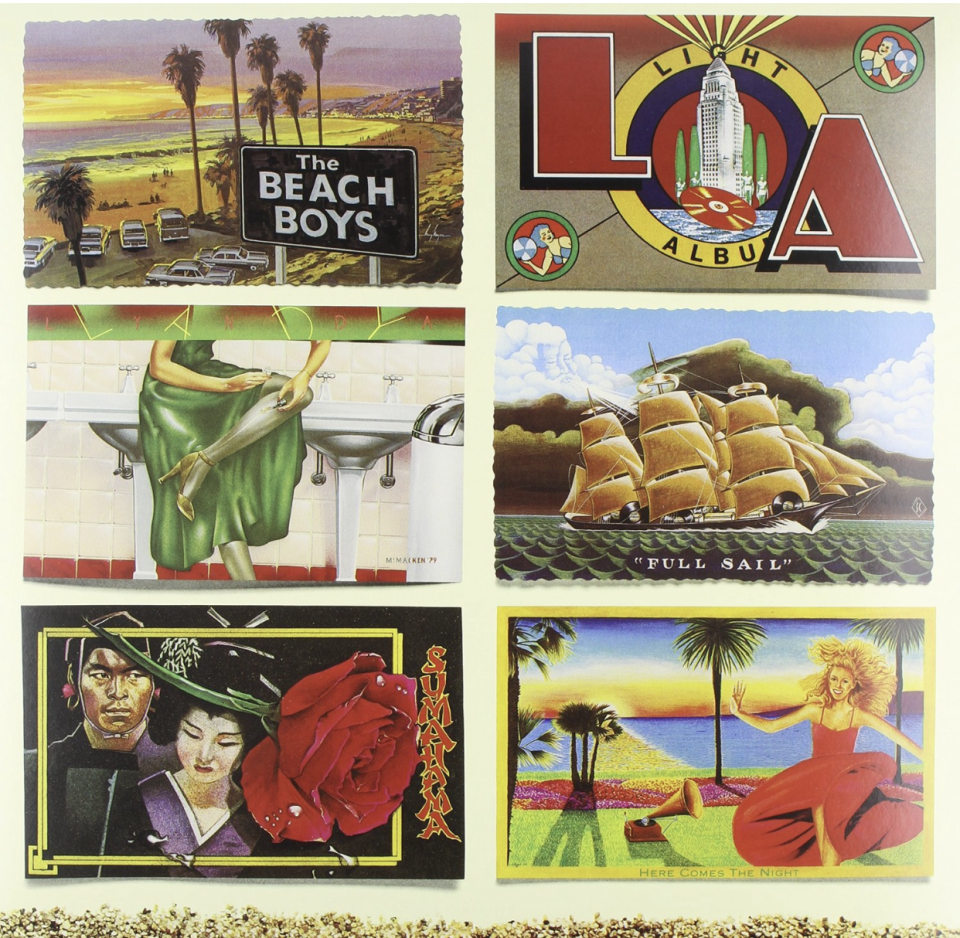
20. L.A. (Light Album) (1979)
In 1979, the slide was in full force, and Dennis’ sumptuous “Baby Blue” and the actually-pretty-great disco rework of “Here Comes the Night” was not enough to stop L.A. (Light Album) from mediocrity. There’s still the muscle memory of how to execute the odd decent song (“Angel Come Home” and “Love Surrounds Me” are both enjoyable soul cuts), but, as ever, we’re left wanting more. (Oh, and let’s not forget “Sumahama,” Mike’s thoughtful, Japanese-language tribute to his Korean fiancee).
19. Surfin’ U.S.A. (1963)
Surfin’ U.S.A. is the group’s second album and very much picks up where Surfin’ Safari left off. The title track is a quintessential Beach Boys single, while “Lonely Sea” is a glowing forerunner to ‘‘‘Til I Die.”
18. M.I.U. Album (1978)
After Brian was allowed to indulge his creative flights of fancy for The Beach Boys Love You, this freedom was whisked away from him for the recording of M.I.U. Album, where the group opted for a more radio-friendly feel. Although “My Diane” (written during the Love You era) is a rough-hewn yet heartfelt highlight and “She’s Got Rhythm” is a goofy gem, the rest is pretty average.
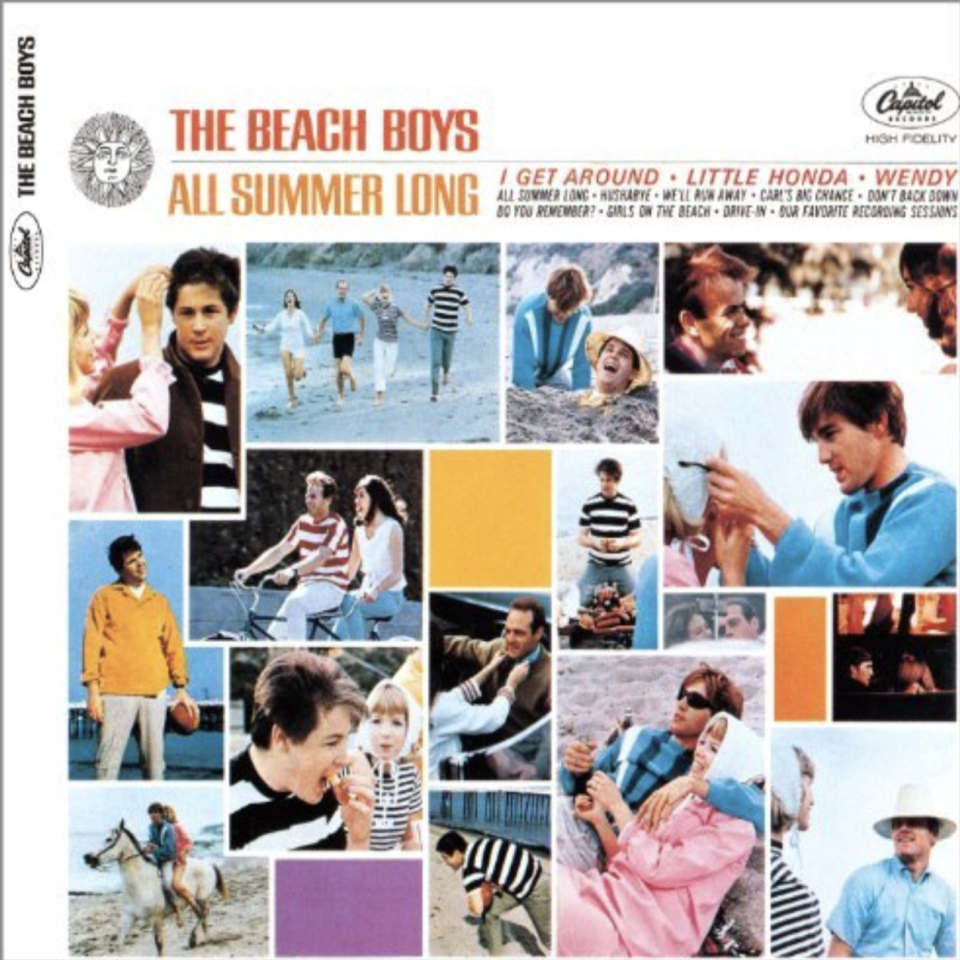
17. All Summer Long (1964)
All Summer Long was the kind of sonic leap forward that Brian would become accustomed to making in the early-to-mid 1960s. Here, we started to see more musical development, more unconventional instruments, and more of those iconic Wilsonian chord changes marbling each song. Brian was beginning to experiment with structure and veer away from surfing themes, with a growing introspection that would go on to characterize some of their most advanced works.
16. 20/20 (1969)
1969 was a difficult time for The Beach Boys. Record sales were slowing; Dennis’ lodger, Charles Manson, wanted a deal with Brother Records, the band’s own label; and Brian was admitted to a psychiatric hospital. A collection of odds ‘n’ sods that never quite feels like a coherent body of work, 20/20 still has a few all-timers, including the whip-smart “Do It Again” and a lush, thrumming cover of the Ronettes’ “I Can Hear Music.” “Our Prayer” and “Cabin Essence,” harvested from the SMiLE glut, close out the album in all their faded magnificence.
15. The Beach Boys’ Christmas Album (1964)
One of the finest festive albums, The Beach Boys’ Christmas Album features a few originals, including the merry Wilson-Love collaboration “Little Saint Nick” and some orchestration-heavy updates of Christmas standards. “We Three Kings of Orient Are” is the slowburn highlight here, showcasing how rich and supple Brian’s voice was pre-1970.

14. Surfer Girl (1963)
Surfer Girl is the album where Brian started to strain against the simpler rock ‘n’ roll format on the back of which the Beach Boys had catapulted to fame. Along with the gorgeous ballad “Surfer Girl,” there’s also “In My Room,” which approaches a kind of introverted sublime. Despite the obligatory surf and girls tracks (“Catch a Wave” is another highlight), Brian’s growing production chops and strange, nonlinear chord progressions mark Surfer Girl as the moment the Beach Boys started to leave competitors in their wake.
13. Shut Down Volume 2 (1964)
Most early Beach Boys records contain a few breathtaking cuts, some earworms that Brian seems to have bashed out during a week at the piano, and one or two that beg the question: Why? In this regard, Shut Down Volume 2 is in good company. Still, it boasts “Don’t Worry Baby” (pure pop perfection) and the elegant “Warmth of the Sun,” with its complex harmonies and unpredictable modulations.
12. The Beach Boys Today! (1965)
Often seen as Pet Sounds’ forefather, The Beach Boys Today! neglects the typical cars-and-surfing songs in favor of meditations on age and anxiety. Partly fuelled by Brian’s introduction to marijuana and the time and space afforded by stepping back from touring, it showcases classical orchestration (‘Please Let Me Wonder’), dissonance (“In the Back of My Mind”), and more complex harmonies than you can shake a stick at. Big things were brewing in Brian Wilson’s brain.
11. Carl and the Passions – “So Tough” (1972)
Carl and The Passions — “So Tough” is notable for being the first album in five years not stoked in the embers of SMiLE. And it sounds all the better for it. Dennis Wilson contributes the Wagnerian “Cuddle Up” and “Make It Good,” while “Here She Comes” and “Hold On Dear Brother” (courtesy of new members Ricky Fatarr and Blondie Chaplin) recall the Band-esque Americana. Like most of the band’s late-’60s and ‘70s albums, Brian’s contributions are fitful but magnificent.
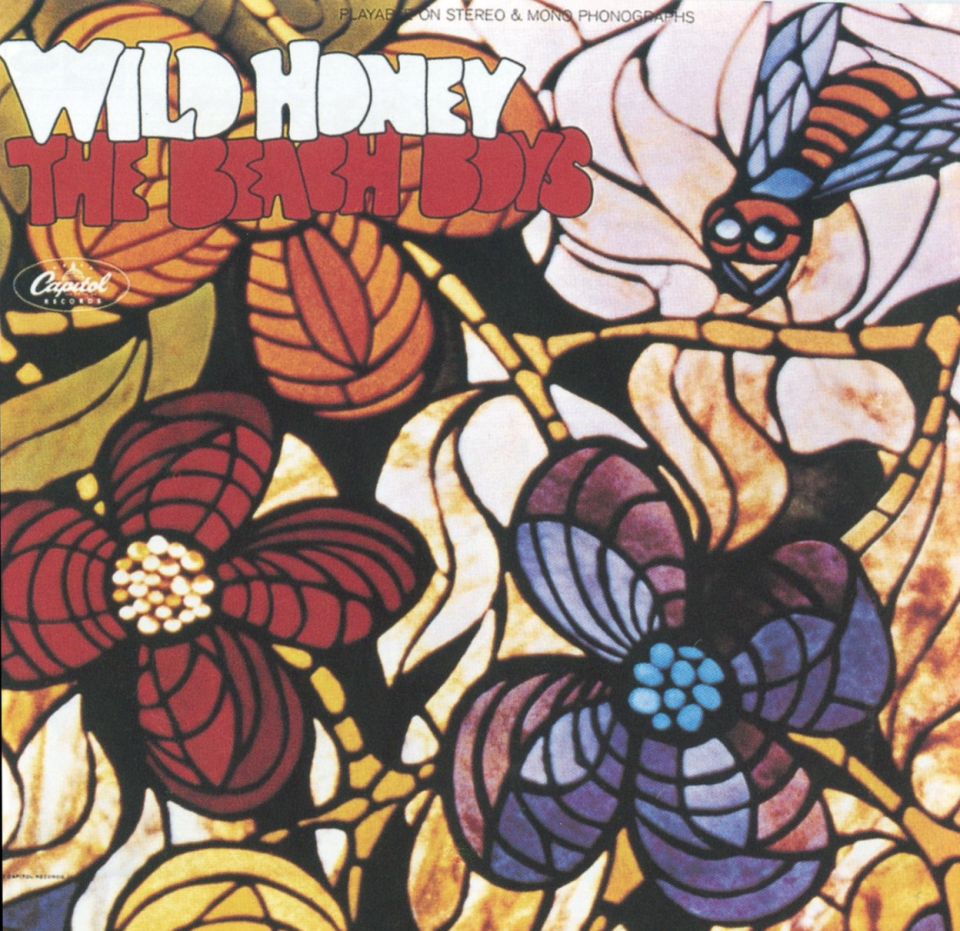
10. Wild Honey (1967)
Designed to allow Brian to “cool out” after the arduous SMiLE recording process, Wild Honey is characterized by its classic R&B sound and pared-back sonic palette of detuned piano, organ, and bass—a back-to-basics approach that subverted the psychedelic excesses of the mid-to-late 1960s. Listening to the likes of Wild Honey, you get the sense that that Brian had an arsenal of tracks like “Country Air” and “Darlin’” and that, with more time, space, and support to carry on crafting weird pop marvels in his home studio, more albums of this caliber might have been released. Just another “what if” to add to the teetering pile.
9. Holland (1973)
Holland is undoubtedly the last great collaborative Beach Boys album. During its writing and recording in Holland, Brian largely stayed away from the studio—although he was working on the Randy Newman-inspired Mount Vernon and Fairway EP back home in Laren, North Holland—and the rest of the band were left to fend for themselves. New manager Jack Rieley and Carl Wilson contributed the anti-colonial “The Trader,” while Dennis Wilson and Mike Love collaborated on the tender “Only With You,” and Brian co-wrote the rollicking “Sail on Sailor” once the group returned to L.A. If Holland does nothing else, it proves the Beach Boys could function without their erstwhile leader.
8. Summer Days (And Summer Nights!!) (1965)
Summer Days (And Summer Nights!!) is patchy, but it has a clutch of all-time classics. “Let Him Run Wild” and “You’re So Good to Me” demonstrate the economy of Brian’s songwriting (not a second is wasted), while “And Your Dream Comes True” shows their five-part harmony at its peak. Oh yeah, and there’s “California Girls,” which encapsulates everything wonderful about the Beach Boys’ music, from the aching orchestral prelude to the subtly complex vocal rounds and utterly infectious melodies. Who cares if an album is spotty when it contains songs like this?

7. Friends (1968)
Friends is one of a few late-‘60s Beach Boys albums that disproves the idea that Brian was just a rock star recluse. “Wake The World” and the title track share the musical complexity of SMiLE and Pet Sounds, though they’re less lyrically inventive. We also see the first stirrings of Dennis Wilson as a creative force—his crystalline “Little Bird” and “Be Still” are some of the album’s high points. True to form, though, an excellent record faced a chilly public response and Friends limped to No. 126 in the U.S. charts. Later consensus deemed it as perfect an assembly of sunny, orchestral pop as anything else from the 1960s.
6. Smiley Smile (1967)
In 1983, Carl Wilson told Musician that if SMiLE was a home run, Smiley Smile was a bunt. Full ingestion of the SMiLE Kool-Aid might support this diagnosis, but Smiley Smile is equally atmospheric yet looser, less weighty, a work of subtraction rather than addition. It is a wonderfully immediate album. You feel like you’re right there in Brian’s hash-fume-filled Arabian tent, listening to the Beach Boys giggling, blowing through glass bottles, or messing around on a Baldwin organ. An ancestor of lo-fi music and bedroom pop, Smiley Smile is, in its own way, more influential than SMiLE. At least it stepped up to the plate.
5. Surf’s Up (1971)
Surf’s Up epitomizes what the Beach Boys had shed—the corny stage outfits, the formulaic albums, some of the goofiness—and demonstrates what an innovative rock ensemble they had become. Bruce Johnson contributes the winsome “Disney Girls (1957)”; Brian delivers the hauntingly elegiac “Surf’s Up” (re-recorded for this album), “‘Til I Die,” and “A Day In the Life of a Tree”; while Carl Wilson supplies the finest songs he ever wrote, the lushly textured and handsome “Long Promised Road” and “Feel Flows.” “Surfer′s Rule” this is not.

4. The Beach Boys Love You (1977)
From the first brays of squelchy Moog synth on opener “Let Us Go on This Way,” it’s clear that The Beach Boys Love You stands alone in their discography. A kind of switched-on slice of life, it maps Brian’s general headspace circa 1977 in the same way Pet Sounds did in 1966. These are the humdrum and human experiences of a man who spent his time simply pottering about. Highlights also include the luminous “The Night Was So Young” (as good as anything off Pet Sounds) and “I’ll Bet He’s Nice.” Brian has said on many occasions that The Beach Boys Love You is his favorite Beach boys album—it’s easy to see why.
3. Sunflower (1970)
In 1970 the Beach Boys were ready to start again. A deal with Reprise Records freshly inked, all six members were collaborating and Brian was writing in earnest. Sunflower grew from this harmonious terroir. The blissed-out atmosphere of “All I Wanna Do” predates chillwave, dealing in buttery synths and heavy reverb. “Forever” is Dennis Wilson’s magnum opus. “Cool, Cool Water,” an idiosyncratic SMiLE rework, bubbles merrily along to its own beat. The rest of the album is perfect pop wherever you look. Naturally, it was a commercial flop, Brian retreated to bed, and discontent brewed. Sunflower signaled the end of something before it had really begun.
2. Pet Sounds (1966)
It’s remarkable how thoroughly Pet Sounds has saturated popular culture. The hits regularly appear in films, adverts, and television shows, and it rivals the likes of Dark Side of the Moon, Rumours, and Revolver for capital-GA Great Album status among civilians. However, it still hasn’t lost any of its emotional heft or innovation. There’s “Wouldn’t It Be Nice,” that bouncing, bounding Golden Retriever of a song. There’s “God Only Knows,” a work of exquisite yearning. “Don’t Talk (Put Your Head On My Shoulder)” is one sad sigh committed to tape, so good it’s almost scary. Pet Sounds is every bit as wonderful as everybody says.
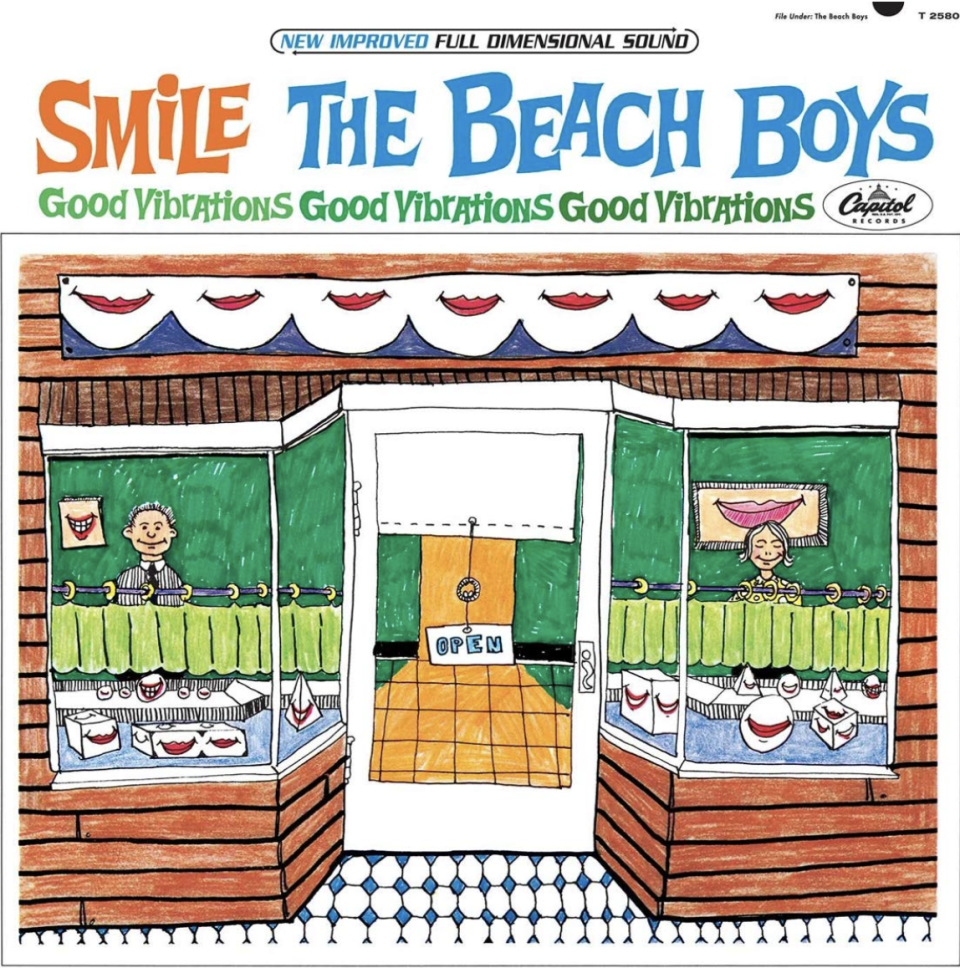
1. SMiLE (N/A) / The SMiLE Sessions (2011)
The greatest What Could Have Been in popular music. SMiLE, conceived and written between 1966 and ‘67, was Brian and lyricist Van Dyke Parks’ imaginarium, their sandbox, a technicolor trip that tells the story of America through interlinked songs and repeated musical “feels”/vignettes. And yet, it never quite materialized. With the liters of ink spilled over SMiLE, the story would be in danger of outweighing everything else if the music wasn’t so good. We set off with “Our Prayer,” a rapturous, wordless chorale that gives way to the bonkers musical journey of “Heroes and Villains” and the astonishing, Gershwin-esque “Cabin Essence,” past the baroquely pretty “Wonderful,” past “Surf’s Up” (perhaps Wilson and Parks’ best collaboration) and the singular “Good Vibrations.” While its final form was never quite realized, SMiLE lives on like some ancient, incomplete mosaic or fragments of a sacred text, sustained by its enduring legacy.
To see our running list of the top 100 greatest rock stars of all time, click here.
